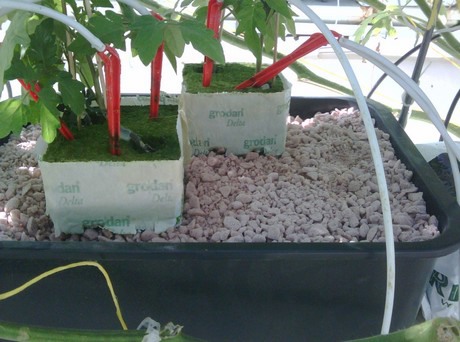
Growstones in Bato buckets in a commercial greenhouse trial in 2009 with tomatoes.
At the time the first trials were done by the University of Arizona, Paula Costa was a graduate student at Agriculture & Biosystems Engineering Department. "I was finishing my research project at the CEAC and very quickly got directly involved in setting the first informal greenhouse trials with Growstones crushed foamed glass in the Fall of 2005," says Paula who is now Growstone's R&D Director.
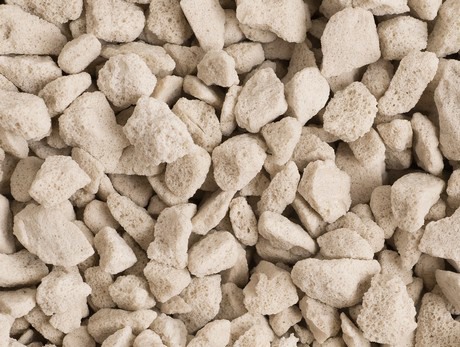
Growstones porous aggregates made from recycled glass.
Growstones are porous glass aggregates produced from powdered waste glass that can be best described as ‘manufactured pumice’ since its aggregates are very porous and light weight. They are characterized by an open cell structure and interconnected pores resulting in a rooting medium with a very high capillarity. Unlike mined pumice, Growstones porosity profile is very homogeneous and consistent.
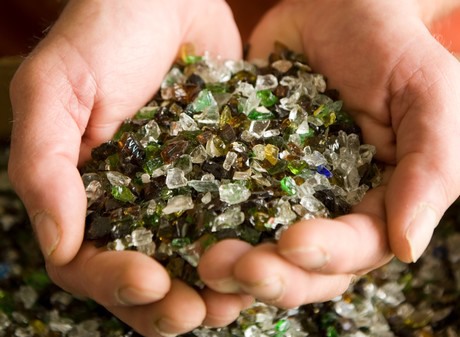 Every year a single Growstone plant can remove 6,000 – 8,000 tons of glass from landfills and turn it into growing media and soil amendments referred to as Growstones. Growstone, Inc. patented manufacturing process not only reduces the load of waste glass in the landfill, but also reduces the need for mining other growing substrates, tackling both ends of an environmental problem by creating a sustainable solution.
Every year a single Growstone plant can remove 6,000 – 8,000 tons of glass from landfills and turn it into growing media and soil amendments referred to as Growstones. Growstone, Inc. patented manufacturing process not only reduces the load of waste glass in the landfill, but also reduces the need for mining other growing substrates, tackling both ends of an environmental problem by creating a sustainable solution.Next to these environmental advantages, Growstones have also many advantages in terms of cultivation and yields. "Formal greenhouse research trials showed promising results all of which associated with Growstones high porosity and drier nature," says Paula. Here are some of the findings:
- Growstones yields match Rockwool’s after a few simple irrigation strategy adjustments such as more frequent but shorter irrigation shots to adjust for Growstones drier nature. At the end of the day all plants received the same amount of water and nutrients.
- Higher steerability – very fast response to changes in root moisture:
- Over 30% water holding capacity (v/v). Fully rehidrates in 1 minute
- Over 50% air at any time (more generative)
- Earlier fruit set and smaller stem diameter (more generative)
- Can still steer vegetative with irrigation strategies promoting higher moisture content
- Quicker recovery from human mistakes that can lead to yield losses. For example significantly quicker recovery from severe BER in tomatoes.
- Pythium insensitive (less free water, well aerated root zone creating aerobic conditions for the root micro flora). Probably same applies to other root diseases.
- Significantly fewer cupped leaves (cucumbers)
- Specific surface area 60,000 m2/m3 (± 10%). That is 6 ha in each m3!! Equivalent to about 18,000 ft2/ft3 (measured by multi-point BET with Nitrogen)
- Slow release of soluble Silicon over time.
- Can be safely steam sterilized and reused.
Paula adds: "It is worth noting that these results were achieved using quite large Growstones particle size. Since then Growstones developed different particle sizes suitable for a wider range of growing applications."
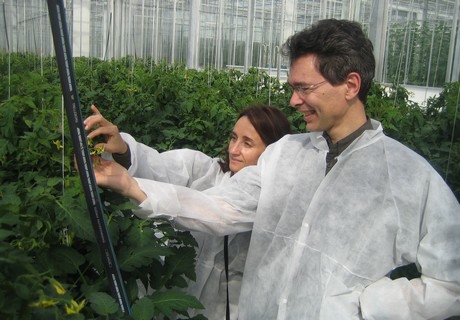
Dr. Paula Costa, Director of R&D at Growstone and Chris Blok, Project Manager at Wageningen University Research, Greenhouse Horticulture, checking Growstone greenhouse trial comparing tomato plant growth and yields between Growstones and rockwool in 2007, Netherlands.
Growstones performance, drier nature, balanced water-air ratio, higher steerability, slow release of soluble Silicon over time, and the fact it repurposes waste into growing substrate makes it a unique substrate. Dr. Gene Giacomelli, Director CEAC and Professor Ag & Biosystems Engineering Department, University of Arizona, summarizes his original thoughts about Growstones by saying that “Growstones was the most unique, original [i.e. new] growing media since Rockwool was first used in 1970’s”.
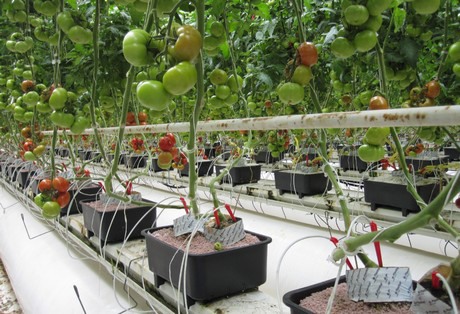
Overview of a commercial greenhouse trial in the USA comparing tomato plant performance between Growstones and perlite in Bato buckets.
So why are these Growstones not yet available for commercial use? "The commercial hydroponic market was the main focus of Growstone at the very beginning, yet the production volumes from the first plant in New Mexico were all taken up by the retail market.
But this may change very fast, for Growstone is now working to build more plants, strategically located in different cities across the US, not only in New Mexico. " With increased production capacity we will have more volume and a more attractive price point for the commercial greenhouse market”.
Click here to learn more about the Growstone trials conducted at Wageningen University & Research and The University of Arizona.
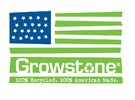 For more information
For more informationGrowstone, Inc.
Paula Costa, PhD
R&D Director
paula.costa@growstone.com
www.growstone.com
